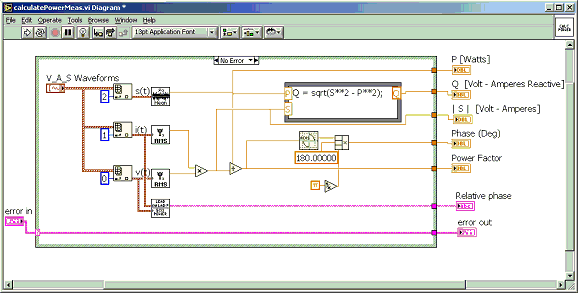Apparent Power
Apparent power is the measure of a circuit’s impedance (Z) and is represented by an S, which has a unit measure of Volt-Amps (VA). Apparent power is the combination of reactive power and real power, without reference to a phase angle. You can calculate apparent power by using the following formula:
Apparent Power (S) = Vrms * Irms
To accurately measure apparent power, you need the following capabilities:
- Voltage and current waveform acquisition capability
- Simultaneous acquisition of both measurement waveforms
- Both measurement devices must acquire simultaneously
- Analysis functions
Traditionally, this measurement functionality was only found in specialized power meters because a traditional digital multimeter has asynchronous clocks and does not provide waveform acquisition capability. However, using the modern digital multimeter architecture of the NI PXI-4070 FlexDMM, which boasts digitizer capability, along with NI LabVIEW analysis functions, you can build an apparent power measurement system, as shown in the image below.
The system requires two PXI-4070 FlexDMMs: one configured to measure voltage and the other to measure current. Using the NI-DMM instrument driver, you can configure two FlexDMMs to trigger off the same PXI trigger line. The block diagram below is an example of how you would make these measurements in LabVIEW.
